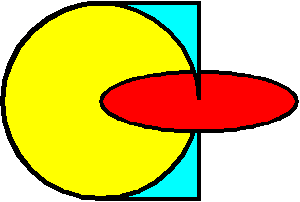

The REFLECTION of the CAUSE
An example through Grey Literature
Effects and measures to be taken
Copyright © Dr William Theaux 1999

|
|
||

CYBEK
|
|

|
|
FOREWORD
|
|
TABLE/OUTLINE Essay in four parts:
Cybernetic Principle of
Reflection
Linguistics, participation of
humankind
Ancient option of
Idealization
Contemporary option of
regeneration |
|
...at the point where technology reaches back to its cause... |
![]() The management of Grey
Literature may encounter a major difficulty when it overlooks that Grey
Literature stands at the source of the social organization. This oblivion
already appears in the usual definition of Grey Literature as "what
is produced by academia, governement, industry etc..". It is true
that these institutions 'produce' what can be detected as Grey Literature
(pre-print, data, reports, email etc...) - but it would be wrong to neglect
the fact that though they may be defined and organized by a 'White Literature'
(official and négociable texts) - this White Literature is nevertheless
preceded by the said Grey Literature in fact.
The management of Grey
Literature may encounter a major difficulty when it overlooks that Grey
Literature stands at the source of the social organization. This oblivion
already appears in the usual definition of Grey Literature as "what
is produced by academia, governement, industry etc..". It is true
that these institutions 'produce' what can be detected as Grey Literature
(pre-print, data, reports, email etc...) - but it would be wrong to neglect
the fact that though they may be defined and organized by a 'White Literature'
(official and négociable texts) - this White Literature is nevertheless
preceded by the said Grey Literature in fact.
![]() Though we may find it
a non-definable loop - and perhaps a contradiction - in reality, there is
even no paradox, for the integration of the Information Technology (IT) in
the system of the story of this acknowledgement, results in a clear, and
rather simple analytic disposition. I must only say that I shall use in this
page the term 'Cybernetics', as I do usually to signify the whole range from
Electronic Network via IT, up to AI (Artificial
Intelligence), even including their Hardware.
Though we may find it
a non-definable loop - and perhaps a contradiction - in reality, there is
even no paradox, for the integration of the Information Technology (IT) in
the system of the story of this acknowledgement, results in a clear, and
rather simple analytic disposition. I must only say that I shall use in this
page the term 'Cybernetics', as I do usually to signify the whole range from
Electronic Network via IT, up to AI (Artificial
Intelligence), even including their Hardware.
![]() At that
point, an animated picture, with Cybernetics as
a black box, will take a few seconds to explain the logical situation that
we are facing.
At that
point, an animated picture, with Cybernetics as
a black box, will take a few seconds to explain the logical situation that
we are facing.
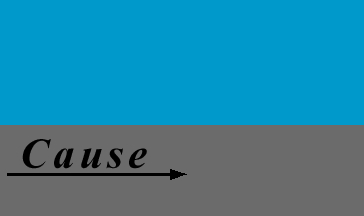
Pic10: Product formation and Repression of the Cause
This picture illustrates how the cause
- for instance of a social meeting or a textual enterprise -
meets Cybernetics, which reflects or operates like
a dam,
so that an object springs from the enterprise, looking like its
product.
|
...as with the Psychoanalytic experience of the Unconscious... |
![]() The tension which is
established by an interactive apparatus (Cybernetics as the black
box in Pic10) alters the casuistics of human phenomenon - bringing its cause
to appear as its product. This is well known in philosophical and psychological
situations, as it is felt, for example, when a subject wonders if s/he is
the author or the result of a dream (or the Unconscious). Such
question can be triggered by Transference, hypnosis or drugs. In the modern
world this situation becomes dramatic when it is raised by Cybernetics -
for it may not leave a space for even questioning.
The tension which is
established by an interactive apparatus (Cybernetics as the black
box in Pic10) alters the casuistics of human phenomenon - bringing its cause
to appear as its product. This is well known in philosophical and psychological
situations, as it is felt, for example, when a subject wonders if s/he is
the author or the result of a dream (or the Unconscious). Such
question can be triggered by Transference, hypnosis or drugs. In the modern
world this situation becomes dramatic when it is raised by Cybernetics -
for it may not leave a space for even questioning.
![]() An example is given
by Grey Literature whose acknowledgement is compelled by Cybernetics (Internet
etc...). The next picture illustrates how Linguistics formulates how a name
(Grey Literature in this case) represents what appears to be
produced:
An example is given
by Grey Literature whose acknowledgement is compelled by Cybernetics (Internet
etc...). The next picture illustrates how Linguistics formulates how a name
(Grey Literature in this case) represents what appears to be
produced:
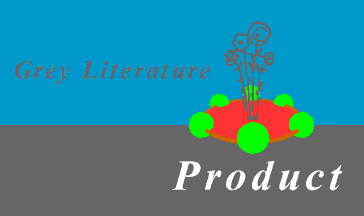
Pic20: The naming of the cause and its repression
This picture illustrates the Signifier (Grey Literature) above the signified
(Product)
It is supported by the founding algorithm of Linguistics by
F. De Saussure
|
|
and its dynamic representation in the Lacanian
Cyphermatics
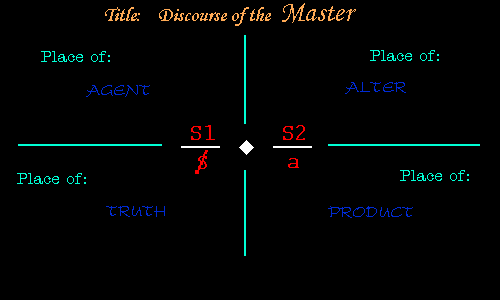
|
|
...Psychoanalysis means analysis of the Psyche, analysis of the 'mirroring'... |
![]() The objectivation of
the cause is a complex process which bounces a virtual representation of
the origins. The objectivation of Grey Literature is a similar assertion
of registration - of - what - is - not - registered. It is a paradox
for what is thus registered is not not-registered anymore. Such detection
of the un-detected is a frequent issue in Science, and it is typical with
Psychoanalysis which uncovers the Unconscious. This paradox is resolved through
the Linguistic rules of registration and naming (textualization). This process
of textualization is efficiently formulated by the Lacanian Optical
Model - which offers two options:
The objectivation of
the cause is a complex process which bounces a virtual representation of
the origins. The objectivation of Grey Literature is a similar assertion
of registration - of - what - is - not - registered. It is a paradox
for what is thus registered is not not-registered anymore. Such detection
of the un-detected is a frequent issue in Science, and it is typical with
Psychoanalysis which uncovers the Unconscious. This paradox is resolved through
the Linguistic rules of registration and naming (textualization). This process
of textualization is efficiently formulated by the Lacanian Optical
Model - which offers two options:
![]() The first one shows
the classical regime of awareness standing in front of an illusion
(Grey Literature as product):
The first one shows
the classical regime of awareness standing in front of an illusion
(Grey Literature as product):
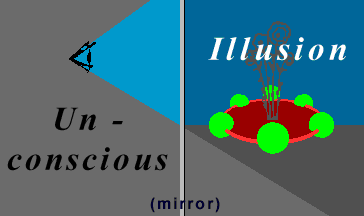
This is a static ideology mode based on the ignorance of the cause.
Activity there, is limited to Repetition, and the illusion (of production)
is
sustained by a philosophical Absolute, or 'idealization'.
|
|
This mentality of a Classic Age is described from Lacan's Optical Model:
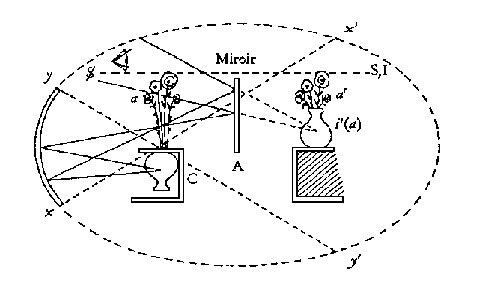
|
|
... the reflection of the cause imposes specific measures... |
![]() If the Classical perspective
(Pic:30) is maintained while Cybernetics establishes the Modern age, its
feed-back processes induces a collapse or aggravates the Idealization into
a super-egotization, which is also associated with a death-drive. One century
of Psychoanalysis has shown an alternative to this situation:
If the Classical perspective
(Pic:30) is maintained while Cybernetics establishes the Modern age, its
feed-back processes induces a collapse or aggravates the Idealization into
a super-egotization, which is also associated with a death-drive. One century
of Psychoanalysis has shown an alternative to this situation:
![]() A stimulation of memory
in the social process of textuality makes the second option in the Lacanian
theory. It is an analysis, which allows for intelligibly drawing
back the product on its cause. This analysis of the reflection induces
dynamic effects, directly on the cause. It is generating, regenerating or
updating what we usually call a Code. For instance, this is practical
with genetic engineering--when the industrial effect of genetically altered
product will eventually alter the genetical code of the human agent himself.
Measures of analytic reflection must be thus implemented in order to re-generate
the cause. This situation is equivalent with the textuality of the social order.
A stimulation of memory
in the social process of textuality makes the second option in the Lacanian
theory. It is an analysis, which allows for intelligibly drawing
back the product on its cause. This analysis of the reflection induces
dynamic effects, directly on the cause. It is generating, regenerating or
updating what we usually call a Code. For instance, this is practical
with genetic engineering--when the industrial effect of genetically altered
product will eventually alter the genetical code of the human agent himself.
Measures of analytic reflection must be thus implemented in order to re-generate
the cause. This situation is equivalent with the textuality of the social order.
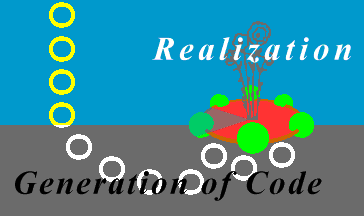
Pic40: Realization of Productivity and Regeneration of the Cause
Instead of a collapse (Pic:30 - illusion) - a regeneration of the social
code,
- genetical code, hormonal code etc... according to the situation
-
is triggered by measures of dynamic analysis of the organization.
Plural circuit of and Serial logic are Cybernetical and
Sociological concepts..
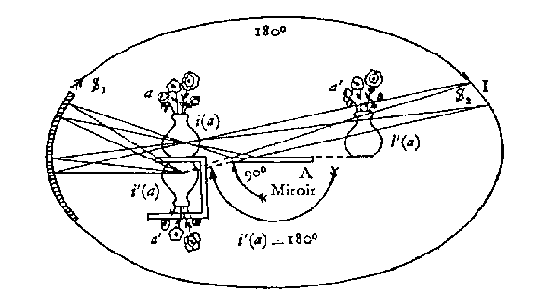
|
..which are also described in the lacanian formula of the psychoanalytic position

|
![]() An analysis of the
reflection called PLural
ANalysis
(PLAN) addresses the specific
logic which results from the implementation of Cybernetics in the Society
and/or the environment. This is especially true when Grey Literature is released
within the social organization, for Sociology can easily be identified with
textuality (note: this is even a founding moment of the social event
according to the major social theory of
E.Durkheim). Our example, the objectivation of
Grey Literature, offers an opportunity--and a vital request--to get back
towards the cause of the Social Organization, i.e. to implement a reflection
that watches and/or regenerates the original social code.
An analysis of the
reflection called PLural
ANalysis
(PLAN) addresses the specific
logic which results from the implementation of Cybernetics in the Society
and/or the environment. This is especially true when Grey Literature is released
within the social organization, for Sociology can easily be identified with
textuality (note: this is even a founding moment of the social event
according to the major social theory of
E.Durkheim). Our example, the objectivation of
Grey Literature, offers an opportunity--and a vital request--to get back
towards the cause of the Social Organization, i.e. to implement a reflection
that watches and/or regenerates the original social code.
|
CONCLUSION
|